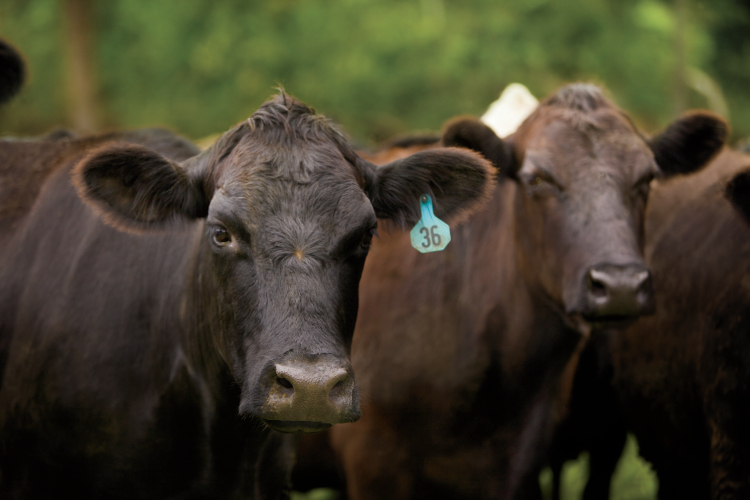Home > Kentucky > Kentucky Crops & Livestock > Feeding the Kentucky Cattle Industry
Feeding the Kentucky Cattle Industry
It is sustainable agriculture that brings together two of Kentucky’s top industries: bourbon and cattle.
“We’re using what would be the waste of one industry to keep another industry thriving,” says Alex Cunningham, a recent University of Kentucky College of Agriculture graduate and a beef cattle farmer in Christian County.
When distilleries produce Bourbon, they also produce a valuable co-product called distillers syrup. This syrup is a dark brown liquid with similar consistency to runny honey and a slightly bitter taste. The product is the liquid fraction that remains after grains – mostly corn, wheat and barley – have been fermented in the process of producing bio-ethanol in combination with yeast and enzymes. Because the syrup is high in metabolizable energy and a good source of protein, some cattle farmers around the state purchase it from local distilleries and add it to their animal feed.
“We’ve been using the distillers syrup as a supplemental feed for a few years now,” Cunningham says. “It helps us finish healthy herds, and we’re also doing our part to be sustainable. There’s no sense in wasting something that we can use.”
Distillers syrup can provide multiple benefits. “Our cattle love it,” say Steve Downs, a cattle producer from Marion County. “Cattle are unique in the fact that they can process different types of feed that may be considered a waste product.”
Downs, who lives in the heart of ‘Bourbon Country’, says that cattle producers in Kentucky are fortunate to have this feed source as an option. “It a good deal for both sides,” he says. “It provides a cost-effective alternative to straight commodity diets and allows the Bourbon industry to get rid of a byproduct.”
The Science behind the Feed
The recent fuel ethanol industry boom is based primarily on corn in much of the U.S., says UK Extension Beef Cattle Specialist Dr. Jeff Lehmkuhler. The distillers grains that come from the corn industry have a high energy value – even slightly higher than granulated corn – and because Bourbon wet distillers grains are derived predominately from corn, this distillers syrup also contains good protein and a high energy value.
“Kentucky may have a gold nugget in this regional feed source if we can overcome a few logistical challenges,” Lehmkuhler says.
Lehmkuhler warns that distillers syrup derived from Bourbon production may be a slightly lower energy and protein source than that of corn due to the mixture of barley in the grains. Barley stalk is more difficult for the animals to digest.
The History of a Feed Partnership
While it is certain that wet Bourbon distillers grains are a viable, quality feedstuff in the diets of beef and dairy cattle, it is far from being a new practice. Lehmkuhler found accounts from more than 150 years ago that illustrated the utilization of spent grains and thin stillage as livestock feed.
In the well-known Feeds and Feeding: Sixteenth Edition by Frank Barron Morrison and William Arnon Henry published in 1916, the authors discuss the potential of distillery byproduct feeds to reduce production costs as something that was widely recognized in the fermentation industry. In fact, many articles published in the early 1900s make reference to several distilleries that had built feeding facilities or dairies near their plants.
“It’s tried and true,” Cunningham says. “We’re taking waste off of the hands of these distilleries, and we’re using it to keep our costs down and to produce healthy animals.
It’s a partnership that doesn’t just benefit farmers and distilleries, but the whole state. It’s Kentucky producers relying on Kentucky producers to help reduce waste and use byproducts in another useful way. It isn’t innovative, it’s just smart agriculture.”






